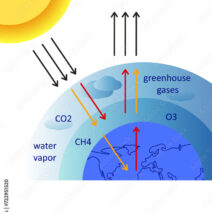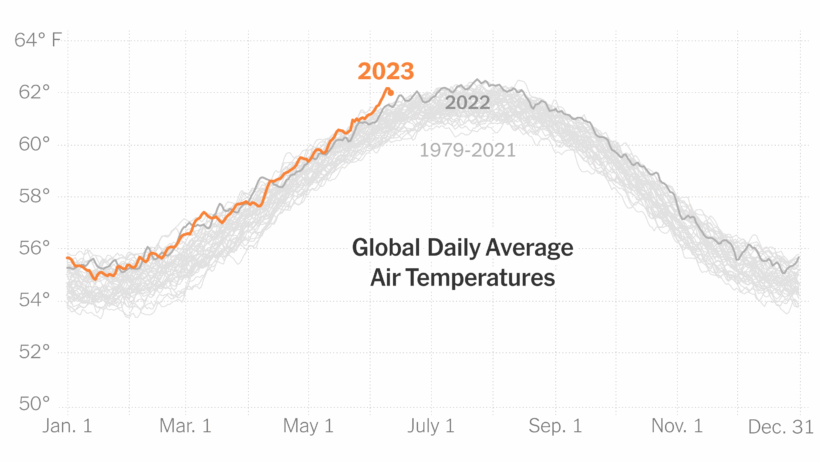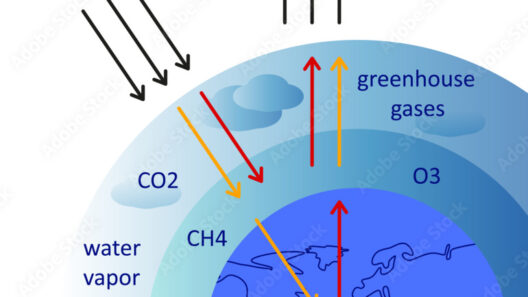The phenomenon of climate change has dramatically reshaped our understanding of weather patterns, creating what can aptly be termed the climate’s new normal. This term encapsulates the transformative implications of global warming, as it interlinks atmospheric dynamics with unprecedented behavioral shifts in weather systems. The ramifications are immense, and their understanding is crucial to navigating future environmental challenges.
At the core of this narrative lies the consistent rise in average global temperatures, primarily driven by anthropogenic emissions of greenhouse gases. Carbon dioxide, methane, and nitrous oxide are prominent culprits, their accumulative presence enhancing the greenhouse effect, which traps solar radiation and warms the Earth. Consequently, we witness a retaliatory response from the planet—extreme weather events are no longer anomalies; they have become commonplace. The documented increase in frequency and intensity of hurricanes, droughts, and heatwaves are harbingers of this unsettling trend.
Heatwaves represent a particularly evocative illustration of climate change. Rising temperatures are reshaping the fabric of seasonal norms, making scorching experiences more frequent across various regions. The summer of 2023, for instance, has ushered in temperatures that surpass historical averages by several degrees. Such aberrations not only sap human productivity but also wreak havoc on ecosystems and agricultural yields, creating economic and ecological ripple effects.
Moreover, the concept of a “heat index” provides a more nuanced perspective on temperature extremes. This metric accounts for humidity, presenting a more accurate portrayal of how heat impacts human welfare. The consequences are dire: increased heat index values can exacerbate health risks, particularly for vulnerable populations such as the elderly or those with preexisting conditions. This intersection of climate and health underscores the urgency of addressing climate change as a public health issue.
While heatwaves persist, an equally troubling manifestation of climate change is the pattern of shifting precipitation. As the atmosphere warms, it holds more moisture, resulting in an amplification of extreme rainfall events in some locales while fostering drought-like conditions in others. This dichotomy poses significant challenges for water resource management and agriculture as regions that once relied on predictable rainfall patterns now grapple with erratic and intense deluges.
The consequence of altered precipitation patterns is multifaceted. Regions that were traditionally lush and verdant may find themselves parched, ushering in food insecurity and economic strain. Conversely, those experiencing inundations must contend with flooding, which devastates infrastructure, displaces populations, and triggers a cascade of other ecological issues, including the contamination of water supplies and loss of biodiversity.
Furthermore, the effectiveness of natural systems to mitigate some of these effects is progressively undermined. Ecosystems are facing stress, with species unable to adapt quickly enough to the rapidly changing environment. For instance, coral reefs, which sequester carbon and support marine biodiversity, suffer from ocean acidification and thermal stress, leading to widespread coral bleaching. The destruction of such ecosystems reverberates through food chains, further complicating the tasks of conservationists and environmentalists.
The climatic new normal also extends to the frequency of extreme weather phenomena, location, and duration. Tornadoes, hurricanes, and wildfires appear to be on the rise, evolving into more potent and unpredictable events. A direct relationship can be drawn between elevated sea temperatures and the burgeoning intensity of tropical storms, demonstrating how interwoven ecological systems contribute to climate change impacts. In regions previously considered safe from such treacheries, communities now brace for potential devastation, forcing policymakers to reassess disaster preparedness and emergency response capabilities.
Beyond these observable changes, there lies a psychological dimension to society’s interaction with the new normal. As extreme weather becomes the established status quo, a kind of fatalism may settle in, whereby people desensitize themselves to the severity of climate phenomena. This normalization of climate volatility is perilous, as it can foster complacency in terms of urgency for mitigation efforts. Public awareness is paramount; continued education about climate science and its implications can rejuvenate public discourse and spur collective action.
Engaging with the climate’s new normal necessitates a multi-faceted approach that encompasses scientific inquiry, policy reform, and grassroots movements. Efforts must coalesce around emission reduction strategies, the advancement of renewable energy technologies, and sustainable practices in agricultural and industrial sectors. Moreover, the promotion of climate resilience through adaptive infrastructure and community engagement is essential to buffer against forthcoming crises.
Finally, the experience of watching weather evolve under the influence of climate change evokes both trepidation and fascination. Amidst the anxiety of unpredictable natural phenomena, there exists a spark of intrigue in understanding the enigma that is our planetary climate system. Science offers the tools to decode and contextualize these complexities, urging us to confront rather than retreat from the reality of climate change.
In conclusion, the climate’s new normal is upon us, characterized by extreme temperatures, erratic precipitation, and unprecedented weather patterns. To understand and mitigate the effects of global warming requires a concerted effort that prioritizes ecological integrity, health, and sustainability. It is incumbent upon society, at large, to navigate this pressing challenge thoughtfully, lest we surrender our planet’s fragile equilibrium to the chaos of climate change.








